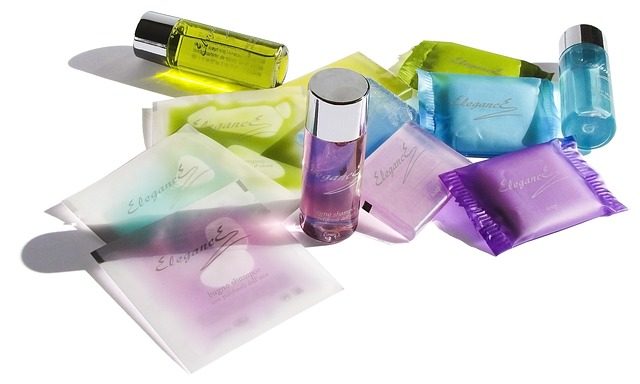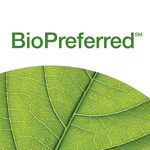Why are Customers Choosing USDA Certified Biobased Products?
Staying ahead of the competition is a critical element of any successful business. In the competitive marketplace that exists today, even superior product offerings can be difficult to market. A unique point of differentiation is often required to secure the largest possible segment of a target market. Many producers are finding that a widely recognized branding and labeling program, such as the USDA BioPreferred® Program, is an effective way to compete and can be incredibly persuasive when it comes to marketing.
If you want to leverage off of the investment that you’ve made in biobased products manufacturing, or even if you’re thinking about investing in the development of a new biobased product, then understanding how consumers see the USDA BioPreferred Program will be important.
Familiarity with the USDA Certified Biobased Label is growing
The USDA BioPreferred Program is no longer in its infancy and can now be considered one of the established standardized eco-labeling systems in the United States. There are now more than 900 certified products, as well as over 1200 products that fall under the Mandatory Federal Purchasing Initiative. There are new products being certified every month, as producers continue to see value in not only biobased materials but in the USDA Certified Biobased Product label.
 A survey performed by DuPont Industrial Biosciences found that 40% of Americans are familiar with biobased and how it is used to describe products and ingredients. Consumers have a positive connection with the term, associating it with natural and sustainable product ingredients. Data from the survey also found that 77% of Americans would prefer biobased household products if they were of a similar cost to non-biobased alternatives. This shows that we’re at a point now where biobased is not just a buzzword, but it’s a recognized and valid term that can help to drive sales and differentiate products on a store shelf.
A survey performed by DuPont Industrial Biosciences found that 40% of Americans are familiar with biobased and how it is used to describe products and ingredients. Consumers have a positive connection with the term, associating it with natural and sustainable product ingredients. Data from the survey also found that 77% of Americans would prefer biobased household products if they were of a similar cost to non-biobased alternatives. This shows that we’re at a point now where biobased is not just a buzzword, but it’s a recognized and valid term that can help to drive sales and differentiate products on a store shelf.
A growing green movement in the United States is driving consumers towards goods that are environmentally friendly. The term ‘environmentally friendly’ is often loosely used, and different consumers have different perceptions of what it means. Some consumers want products that are made from natural resources. Others have more specific preferences, such as products that are made from highly sustainable natural resources. Marketing products based on their content can be effective, however, the use of a standardized label that is backed by the government and a testing program can be even more so.
The USDA BioPreferred Program appeals to consumer purchasing trends and the needs of producers. It lets consumers know that a product has been tested in accordance with requirements designed by the Program and its partners. The Program also provides producers with a recognizable and simple label that indicates a biobased product and the percentage of biomass that was used in creating the product and its packaging.
What types of products are already being sold with the USDA Certified Biobased Label?
 The products that are already certified under the USDA BioPreferred Program are highly diverse. Basic consumer goods like household cleaning products, bathroom products, skincare products, and haircare products are just a few examples. Intermediate products used in manufacturing can also be biobased, and both industrial and commercial focused products have also been certified. Items like safety headgear for construction, paints, and sealants used in construction, and even structural building materials can be found in the USDA BioPreferred Catalog.
The products that are already certified under the USDA BioPreferred Program are highly diverse. Basic consumer goods like household cleaning products, bathroom products, skincare products, and haircare products are just a few examples. Intermediate products used in manufacturing can also be biobased, and both industrial and commercial focused products have also been certified. Items like safety headgear for construction, paints, and sealants used in construction, and even structural building materials can be found in the USDA BioPreferred Catalog.
The product categories are constantly growing, and new products that don’t fit into existing categories can still be certified if they contain a minimum 25% Biobased materials in packaging and the product itself.
Each category varies in the percentage of biobased content required, and the USDA BioPreferred Program aims to increase the minimum percentage when production methods and technology improves. Companies that innovate and develop products with higher biobased content will likely become more competitive because the percentage of biobased content is a prominent feature of the USDA Certified Biobased Product label and is something that consumers consider when comparing products.
Submitting products for the USDA BioPreferred Program
Applying to join the Program is free, and the only costs come from independent testing. Testing for biobased content must be performed by an authorized laboratory that offers ASTM D6866 testing.
Beta Analytic can provide testing that is compliant with all requirements by the USDA BioPreferred Program. Results are provided in 7 business days or less. A priority service is available for results required in 4 business days or less. For price inquiries, please contact the lab.
Ready to send your biobased samples?
Please read the lab’s instructions for USDA Certified Biobased Product Label Applicants
You might also be interested in these topics:
Top 3 Industries that Need to Use Biobased Products
Three Examples of USDA BioPreferred Program Product Categories
What Does It Mean to Sell BioBased Products?
This entry was posted on Monday, June 20th, 2016 and is filed under Biobased Products, USDA Biopreferred Program .